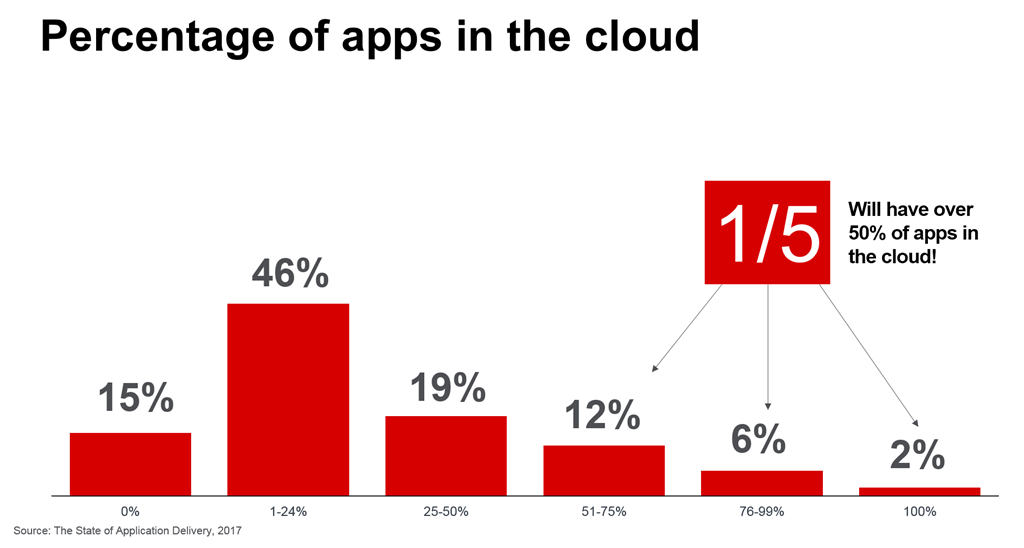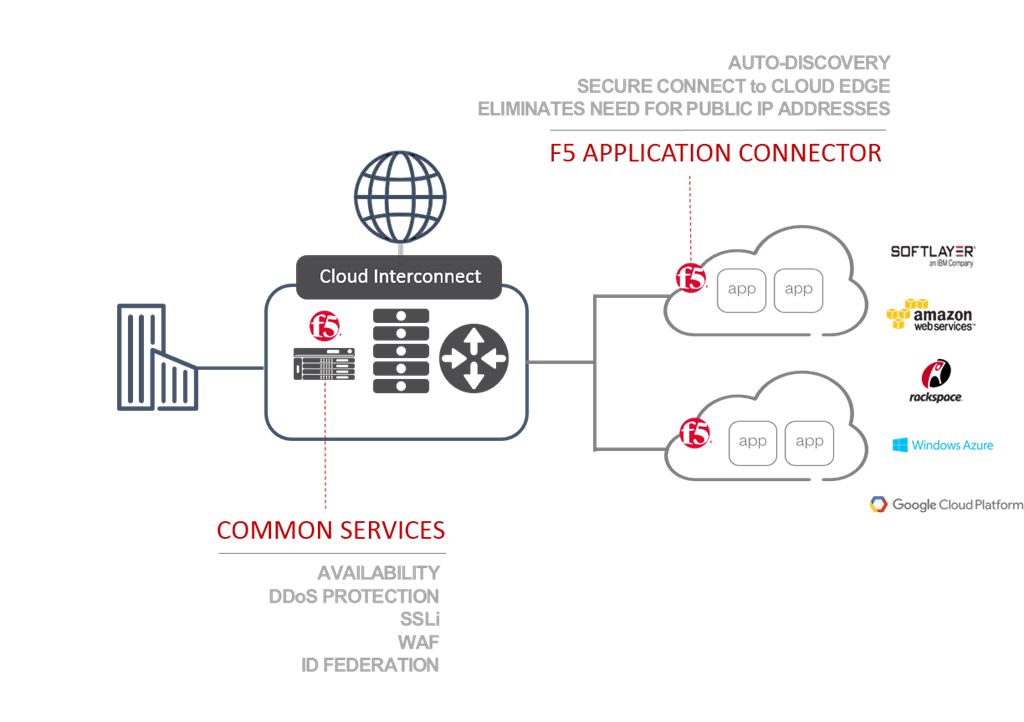Connecteur application F5 : Connexion et contrôle des applications Cloud
Les applications migrent vers les clouds publics. Peut-être pas aussi vite que le marché l’avait prédit (espéré ?) au cours de ses premières années, mais ils évoluent néanmoins. Nos propres enquêtes sur l’état de la distribution des application nous indiquent qu’un répondant sur cinq prévoyait d’avoir plus de 50 % de son portefeuille application dans « le cloud ». Et même si nous constatons encore qu’une grande partie du « cloud » est privé et sur site, de nombreux éléments prouvent que le cloud public est en pleine croissance. Certains des défis cités par les répondants tournent toujours autour de la sécurité, en particulier la capacité à fournir le même niveau de sécurité hors site dans le cloud que celui qu'ils fournissent actuellement sur site, dans le centre de données.

Le fait est que les services que les organisations utilisent actuellement pour sécuriser, faire évoluer et accélérer les applications ne vont pas disparaître. En fait, 39 % des personnes interrogées dans notre enquête ont déclaré qu'elles ne déploieraient pas une application sans services de sécurité tels que des pare-feu application Web et de réseau, une protection contre les attaques DDoS, des systèmes IPS/IDS et des anti-mauvaises choses qui infectent nos réseaux .
Le problème est que certains de ces services ne sont pas disponibles dans le cloud public, et que certains d’entre eux, qui sont disponibles, se révèlent être des imitations superficielles des services d’entreprise plus robustes et plus performants actuellement utilisés. Les modèles de cloud purement publics ne sont pas conçus pour permettre le type de contrôle requis sur les services réseau et application , ce qui rend la parité difficile à atteindre pour les fournisseurs.
Pourtant, les clients souhaitent profiter du cloud public, en particulier pour les applications nouvelles et jetables.
Les interconnexions cloud – ou cloud colo si vous préférez – ont été conçues précisément avec ce scénario à l’esprit. À la périphérie du cloud, chez le fournisseur d’interconnexion, se trouve le contrôle des services communs, tandis que les applications peuvent vivre, évoluer et réussir en toute tranquillité dans le cloud public. L'interconnexion cloud (colo cloud) est un moyen de fournir de manière égale et équitable des services SaaS et des applications exécutés dans un cloud public avec les mêmes services communs au centre de données de l'entreprise. Ceci est particulièrement utile pour les applications Web généralement déployées dans un cloud public en termes de fourniture d'accès sécurisé via HTTPS. Qu'il s'agisse de SSL ou de TLS, les clés et les certificats doivent être émis, gérés et stockés quelque part, et de nombreuses entreprises préfèrent qu'il s'agisse d'un emplacement unique et certifié afin de réduire les risques liés à la distribution de ces données sensibles sur plusieurs emplacements.

Cela semble être l’architecture cloud de centre de données « hybride » idéale que nous recherchions pour résoudre l’énigme du cloud public avec contrôle. Mais bien sûr, si c’était le cas, je n’aurais pas besoin d’écrire un article de blog, n’est-ce pas ? Le problème devient alors de savoir comment « connecter » les applications à l’intérieur du cloud public avec les services communs dont elles ont besoin à la périphérie du cloud dans l’interconnexion cloud.
Dites bonjour au connecteur application F5
Le connecteur application F5 est une instance de proxy légère que vous déployez dans le cloud public. Il découvre vos applications et, via une connexion sécurisée, renvoie vers un F5 BIG-IP déployé chez votre fournisseur d'interconnexion cloud préféré qui permet l'insertion et la gestion des services d'application. Cela signifie que vous pouvez fournir les mêmes services de sécurité, de performances et de disponibilité que vous proposez sur site, dans le centre de données, à la périphérie du cloud dans l'interconnexion tout en tirant parti du calcul du cloud public pour déployer et faire évoluer des applications Web. Les migrations entre fournisseurs de cloud public, ou même entre architectures à haute disponibilité employant plusieurs fournisseurs, sont considérablement simplifiées, car vous n'avez pas besoin de migrer les services et les applications. Les applications et un connecteur application F5 sont tout ce dont vous avez besoin pour vous déplacer librement entre les fournisseurs sans compromettre ni modifier aucun des services d'application dont vous avez besoin pour vous assurer que les applications sont sécurisées, rapides et disponibles.
Étant donné que le connecteur application F5 est une solution basée sur un proxy, aucune adresse IP publique n'est nécessaire dans l'environnement de cloud public. Le risque d'une organisation est réduit en réduisant les points d'entrée potentiels sans entraver la facilité d'accès souvent présentée comme l'un des principaux avantages du cloud computing public.
Il optimise davantage les budgets en concentrant le calcul généralisé du cloud public sur la logique application à usage général et en tirant parti du calcul spécialement conçu dans BIG-IP à la périphérie du cloud pour effectuer le traitement cryptographique plus complexe et plus gourmand en calcul associé au trafic chiffré. L'inspection et la terminaison peuvent s'effectuer en toute sécurité à la périphérie, permettant aux applications de se concentrer sur le traitement de transactions commerciales précieuses.
F5 Application Connector offre aux organisations la confiance nécessaire pour effectuer des opérations de levage et de déplacement ou de passage en mode natif dans des environnements de cloud public en permettant une solution capable de relever les défis de sécurité, d'évolutivité et de performances généralement traités par les services d'application.
Vous pouvez obtenir plus d’informations ici.
